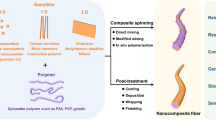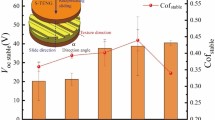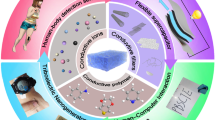Abstract
Controlling friction by the electric field is a promising way to improve the tribological performance of a variety of movable mechanical systems. In this work, the assembly structure and microscale superlubricity of a host—guest assembly are effectively controlled by the electric field. With the help of the scanning tunneling microscopy (STM) technique, the host—guest assembly structures constructed by the co-assembly of fullerene derivative (Fluorene-C60) with macrocycles (4B2A and 3B2A) are explicitly characterized. Combined with density functional theory (DFT), the distinct different assembly behaviors of fullerene derivatives are revealed at different probe biases, which is attributed to the molecular polarity of the fullerene derivative. Through the control on the adsorption behavior, the friction coefficient of host—guest assembly is demonstrated to be controllable in the electric field by using atomic force microscopy (AFM). At positive probe bias, the friction coefficient of the host—guest assembly is significantly reduced and achieves superlubricity (μmin = 0.0049). The efforts not only help us gain insight into the host—guest assembly mechanism controlled by the electric field, but also promote the further application of fullerene in micro-electro-mechanical systems (MEMS).

Similar content being viewed by others
References
Bhushan, B.; Israelachvili, J. N.; Landman, U. Nanotribology: Friction, wear and lubrication at the atomic scale. Nature 1995, 374, 607–616.
Meng, Y. G.; Xu, J.; **, Z. M.; Prakash, B.; Hu, Y. Z. A review of recent advances in tribology. Friction 2020, 8, 221–300.
Hsu, S.; Ying, C.; Zhao, F. The nature of friction: A critical assessment. Friction 2014, 2, 1–26.
Zimmermann, S.; Klauser, W.; Mead, J.; Wang, S. L.; Huang, H.; Fatikow, S. A laterally sensitive colloidal probe for accurately measuring nanoscale adhesion of textured surfaces. Nano Res. 2019, 12, 389–396.
Liu, H. W.; Fujisawa, S.; Tanaka, A.; Enomoto, Y. Controlling and improving the microtribological properties of Langmuir—Blodgett monolayer films using an external electric field. Thin Solid Films 2000, 368, 151–155.
Liu, L. C.; Zhou, M.; **, L.; Li, L. C.; Mo, Y. T.; Su, G. S.; Li, X.; Zhu, H. W.; Tian, Y. Recent advances in friction and lubrication of graphene and other 2D materials: Mechanisms and applications. Friction 2019, 7, 199–216.
Guo, W. L.; Yin, J.; Qiu, H.; Guo, Y. F.; Wu, H. R.; Xue, M. M. Friction of low-dimensional nanomaterial systems. Friction 2014, 2, 209–225.
Ma, S. H.; Scaraggi, M.; Yan, C. Y.; Wang, X. L.; Gorb, S. N.; Dini, D.; Zhou, F. Bioinspired 3d printed locomotion devices based on anisotropic friction. Small 2019, 15, 1802931.
Jiang, Y.; Yue, L. L.; Yan, B. S.; Liu, X.; Yang, X. F.; Tai, G. A.; Song, J. Electric control of friction on silicon studied by atomic force microscope. Nano 2015, 10, 1550038.
Guerra, R.; Vanossi, A.; Urbakh, M. Controlling microscopic friction through mechanical oscillations. Phys. Rev. E 2008, 78, 036110.
Machado, L. D.; Bizao, R. A.; Pugno, N. M.; Galvao, D. S. Controlling movement at nanoscale: Curvature driven mechanotaxis. Small 2021, 17, 2100909.
Gao, Y. Y.; Liu, G. X.; Bu, T. Z.; Liu, Y. Y.; Qi, Y. C.; **e, Y. T.; Xu, S. H.; Deng, W. L.; Yang, W. Q.; Zhang, C. MXene based mechanically and electrically enhanced film for triboelectric nanogenerator. Nano Res. 2021, 14, 4833–4840.
Sweeney, J.; Hausen, F.; Hayes, R.; Webber, G. B.; Endres, F.; Rutland, M. W.; Bennewitz, R.; Atkin, R. Control of nanoscale friction on gold in an ionic liquid by a potential-dependent ionic lubricant layer. Phys. Rev. Lett. 2012, 109, 155502.
Spear, J. C.; Ewers, B. W.; Batteas, J. D. 2D-nanomaterials for controlling friction and wear at interfaces. Nano Today 2015, 10, 301–314.
Socoliuc, A.; Gnecco, E.; Maier, S.; Pfeiffer, O.; Baratoff, A.; Bennewitz, R.; Meyer, E. Atomic-scale control of friction by actuation of nanometer-sized contacts. Science 2006, 313, 207–210.
An, R.; Qiu, X. H.; Shah, F. U.; Riehemann, K.; Fuchs, H. Controlling the nanoscale friction by layered ionic liquid films. Phys. Chem. Chem. Phys. 2020, 22, 14941–14952.
Hu, J.; Pu, X. J.; Yang, H. M.; Zeng, Q. X.; Tang, Q.; Zhang, D. Z.; Hu, C. G.; **, Y. A flutter-effect-based triboelectric nanogenerator for breeze energy collection from arbitrary directions and self-powered wind speed sensor. Nano Res. 2019, 12, 3018–3023.
Kimura, Y.; Nakano, K.; Kato, T.; Morishita, S. Control of friction coefficient by applying electric fields across liquid crystal boundary films. Wear 1994, 175, 143–149.
Gao, Y.; Xue, B. C.; Ma, L. R.; Luo, J. B. Effect of liquid crystal molecular orientation controlled by an electric field on friction. Tribol. Int. 2017, 115, 477–482.
Park, J. Y.; Qi, Y. B.; Ashby, P. D.; Hendriksen, B. L. M.; Salmeron, M. Electrical transport and mechanical properties of alkylsilane self-assembled monolayers on silicon surfaces probed by atomic force microscopy. J. Chem. Phys. 2009, 130, 114705.
Meng, Y. G.; Jiang, H. J.; Wong, P. L. An experimental study on voltage-controlled friction of alumina/brass couples in zinc stearate/water suspension. Tribol. Trans. 2001, 44, 567–574.
Drummond, C. Electric-field-induced friction reduction and control. Phys. Rev. Lett. 2012, 109, 154302.
Sénéchal, V.; Saadaoui, H.; Rodriguez-Hernandez, J.; Drummond, C. Electro-responsive polyelectrolyte-coated surfaces. Faraday Discuss. 2017, 199, 335–347.
Sénéchal, V.; Saadaoui, H.; Rodriguez-Hernandez, J.; Drummond, C. Electrowetting of weak polyelectrolyte-coated surfaces. Langmuir 2017, 33, 4996–5005.
Qi, Y. B.; Park, J. Y.; Hendriksen, B. L. M.; Ogletree, D. F.; Salmeron, M. Electronic contribution to friction on GaAs: An atomic force microscope study. Phys. Rev. B 2008, 77, 184105.
Park, J. Y.; Qi, Y. B.; Ogletree, D. F.; Thiel, P. A.; Salmeron, M. Influence of carrier density on the friction properties of silicon pn junctions. Phys. Rev. B 2007, 76, 064108.
Park, J. Y.; Ogletree, D. F.; Thiel, P. A.; Salmeron, M. Electronic control of friction in silicon pn junctions. Science 2006, 313, 186.
Park, J. Y.; Qi, Y. B. Probing nanotribological and electrical properties of organic molecular films with atomic force microscopy. Scanning 2010, 32, 257–264.
Liu, L.; Zhang, Y.; Qiao, Y. J.; Tan, S. C.; Feng, S. F.; Ma, J.; Liu, Y. H.; Luo, J. B. 2D metal-organic frameworks with square grid structure: A promising new-generation superlubricating material. Nano Today 2021, 40, 101262.
Wang, H. D.; Liu, Y. H. Superlubricity achieved with two-dimensional nano-additives to liquid lubricants. Friction 2020, 8, 1007–1024.
Hod, O.; Meyer, E.; Zheng, Q. S.; Urbakh, M. Structural superlubricity and ultralow friction across the length scales. Nature 2018, 563, 485–492.
Büch, H.; Rossi, A.; Forti, S.; Convertino, D.; Tozzini, V.; Coletti, C. Superlubricity of epitaxial monolayer WS2 on graphene. Nano Res. 2018, 11, 5946–5956.
Wang, K. P.; Liu, L.; Song, A. S.; Ma, T. B.; Wang, H. D.; Luo, J. B.; Liu, Y. H. Macroscale superlubricity under ultrahigh contact pressure in the presence of layered double hydroxide nanosheets. Nano Res. 2022, 15, 4700–4709.
Yoshimoto, S.; Amano, J.; Miura, K. Synthesis of a fullerene/expanded graphite composite and its lubricating properties. J. Mater. Sci. 2010, 45, 1955–1962.
Sasaki, N.; Itamura, N.; Miura, K. Simulation of atomic-scale ultralow friction of graphite/C60/graphite interface along direction. Jpn. J. Appl. Phys. 2007, 46, L1237–L1239.
Miura, K.; Tsuda, D.; Itamura, N.; Sasaki, N. Superlubricity of fullerene intercalated graphite composite. Jpn. J. Appl. Phys. 2007, 46, 5269–5274.
Tan, S. C.; Shi, H. Y.; Fu, L. L.; Ma, J.; Du, X.; Song, J.; Liu, Y. H.; Zeng, Q. D.; Xu, H. J.; Wan, J. H. Superlubricity of fullerene derivatives induced by host—guest assembly. ACS Appl. Mater. Interfaces 2020, 12, 18924–18933.
Zhang, S. Q.; Liu, Z. Y.; Fu, W. F.; Liu, F.; Wang, C. M.; Sheng, C. Q.; Wang, Y. F.; Deng, K.; Zeng, Q. D.; Shu, L. J. et al. Donor-acceptor conjugated macrocycles: Synthesis and host—guest coassembly with fullerene toward photovoltaic application. ACS Nano 2017, 11, 11701–11713.
Shi, H. Y.; Lu, X. C.; Liu, Y. H.; Song, J.; Deng, K.; Zeng, Q. D.; Wang, C. Nanotribological study of supramolecular template networks induced by hydrogen bonds and van der Waals forces. ACS Nano 2018, 12, 8781–8790.
Fowler, P. W. Fullerene graphs with more negative than positive eigenvalues: The exceptions that prove the rule of electron deficiency?. J. Chem. Soc., Faraday Trans. 1997, 93, 1–3.
Bethune, D. S.; Johnson, R. D.; Salem, J. R.; De Vries, M. S.; Yannoni, C. S. Atoms in carbon cages: The structure and properties of endohedral fullerenes. Nature 1993, 366, 123–128.
Miura, K.; Kamiya, S.; Sasaki, N. C60 molecular bearings. Phys. Rev. Lett. 2003, 90, 055509.
Chang, S. Q.; Liu, R. C.; Wang, L. C.; Li, M.; Deng, K.; Zheng, Q. Y.; Zeng, Q. D. Formation of ordered coronene clusters in template utilizing the structural transformation of hexaphenylbenzene derivative networks on graphite surface. ACS Nano 2016, 10, 342–348.
Acknowledgements
This work was financially supported by the National Basic Research Program of China (No. 2017YFA0205000), the National Natural Science Foundation of China (Nos. 51875303 and 21972031), and the Strategic Priority Research Program of Chinese Academy of Sciences (No. XDB36000000).
Author information
Authors and Affiliations
Corresponding authors
Electronic Supplementary Material
Rights and permissions
About this article
Cite this article
Tan, S., Shi, H., Du, X. et al. Electric field controlled superlubricity of fullerene-based host—guest assembly. Nano Res. 16, 583–588 (2023). https://doi.org/10.1007/s12274-022-4641-7
Received:
Revised:
Accepted:
Published:
Issue Date:
DOI: https://doi.org/10.1007/s12274-022-4641-7




